DawgSense
Your Dog's Emotions, Understood and Managed
Collaborators: Fei Huang, Adam Ji, Lirong Que, Negar Torkmanzadeh
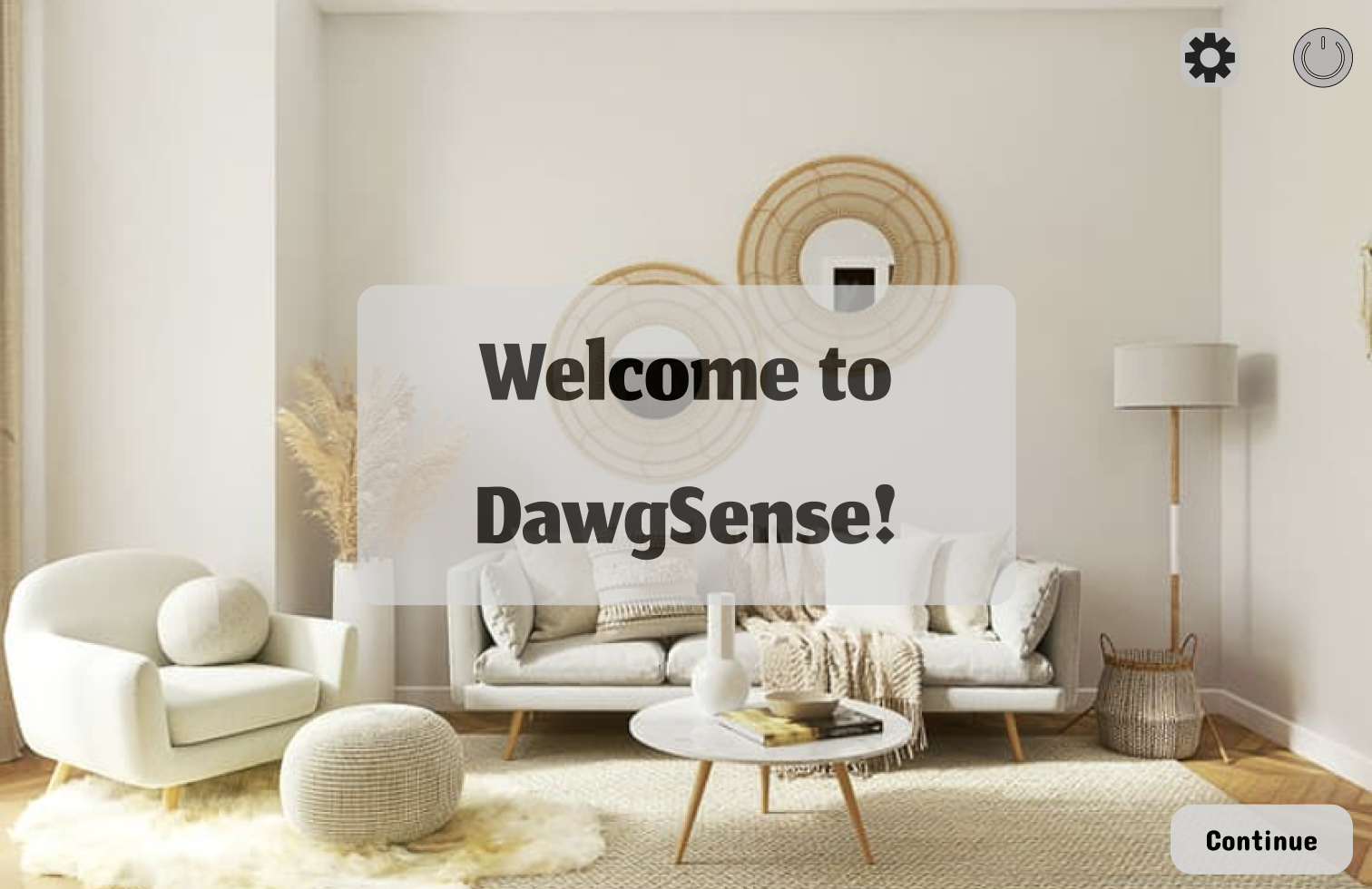
Introduction

Many dog owners struggle to effectively respond to and manage their dogs' emotional and reactive behaviors, particularly in high-stress or unexpected situations such as barking at other dog or behaving abnormally in unfamiliar environments. This issue stems from a lack of tools to help owners interpret and address their dogs’ behaviors in real-time, compounded by limited opportunities to learn from these situations to prevent recurrence. This creates challenges in both immediate intervention and long-term behavior management, leaving owners feeling unprepared and dogs more anxious.
How Does It Work?
Our approach emphasizes equipping dog owners with the means to respond to immediate behavioral challenges with Augmented reality (AR) and reflect on those scenarios for deeper understanding with Virtual reality (VR). By focusing on both the reactive and proactive aspects of behavior management, the design ensures that owners are not only able to address a situation as it arises but also gain insights into potential triggers and alternatives for future prevention. This dual focus helps build owners’ confidence in navigating complex behavioral challenges while fostering a stronger connection with their pets.
Key Functionalities
Our two key functionalities—supporting in-the-moment crisis response and practicing skills to interpret emotional cues—align perfectly with DawgSense's dual AR and VR capabilities. The AR mode on Orion glasses enables real-time detection of behavioral cues and crisis triggers during live interactions with the dog, guiding the user to de-escalate or manage situations effectively as they happen. The VR practice mode enables the reflective learning by allowing users to replay past crises and revisit previously encountered scenarios, learning to identify and interpret signs of anxiety, stress, or aggression in a safe environment. The synergy between our focused tasks and design stems from how AR and VR complement each other, creating a well-rounded system that not only enhances immediate responses but also builds dog owners' foundational knowledge and confidence in understanding and managing dog behavior in various real-world contexts.
#1 Support In-The-Moment Response to the Crisis
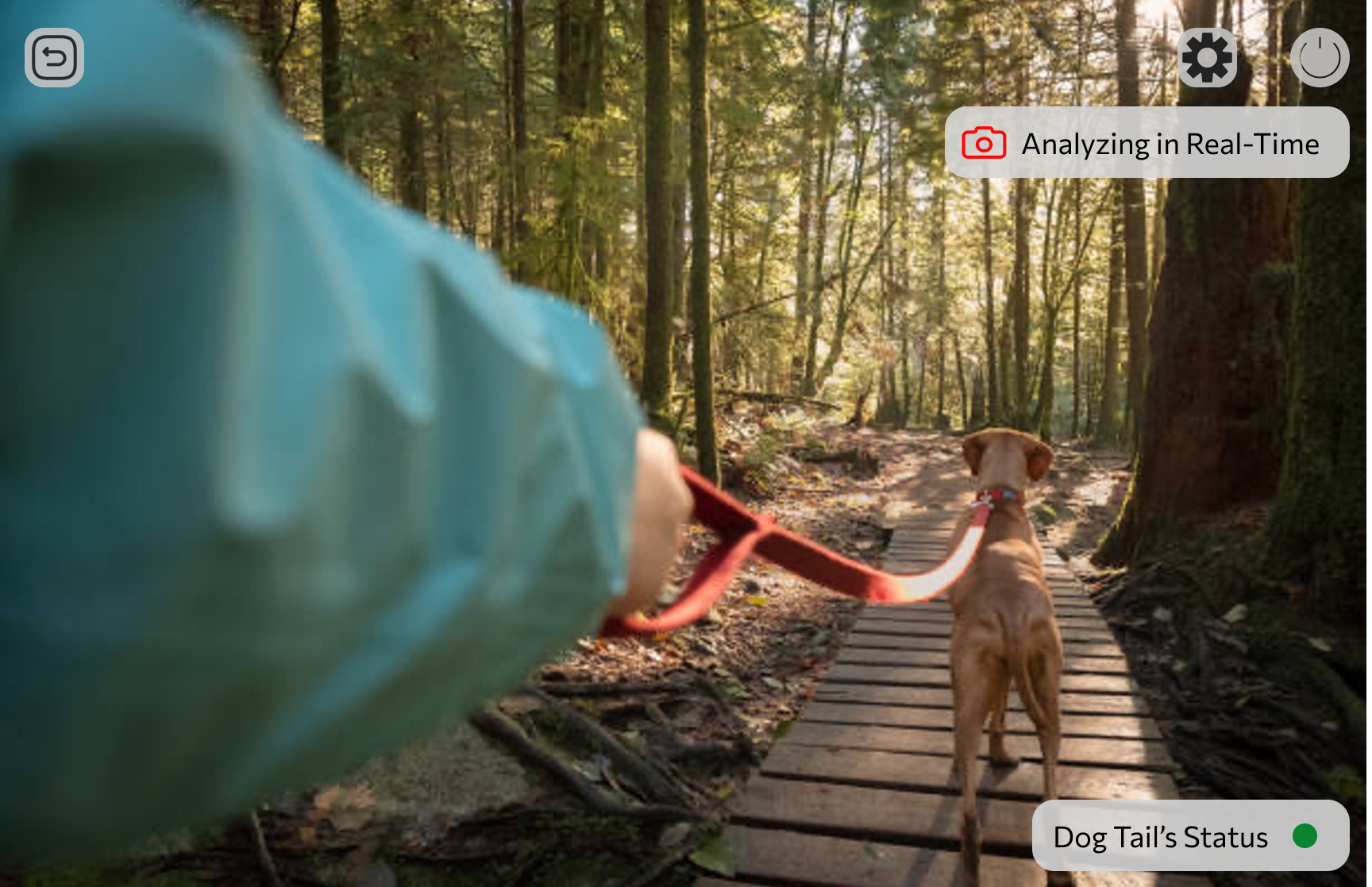
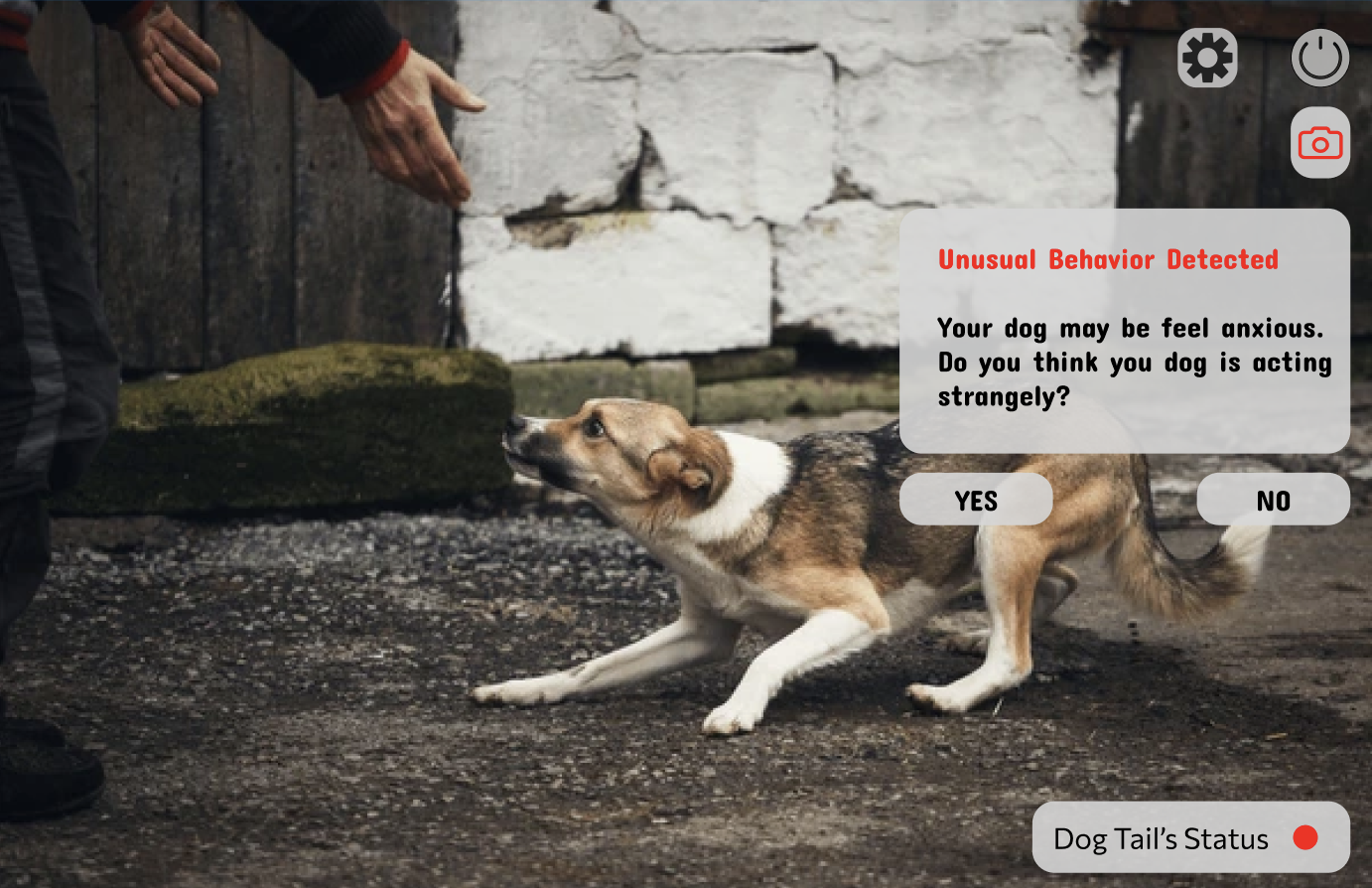
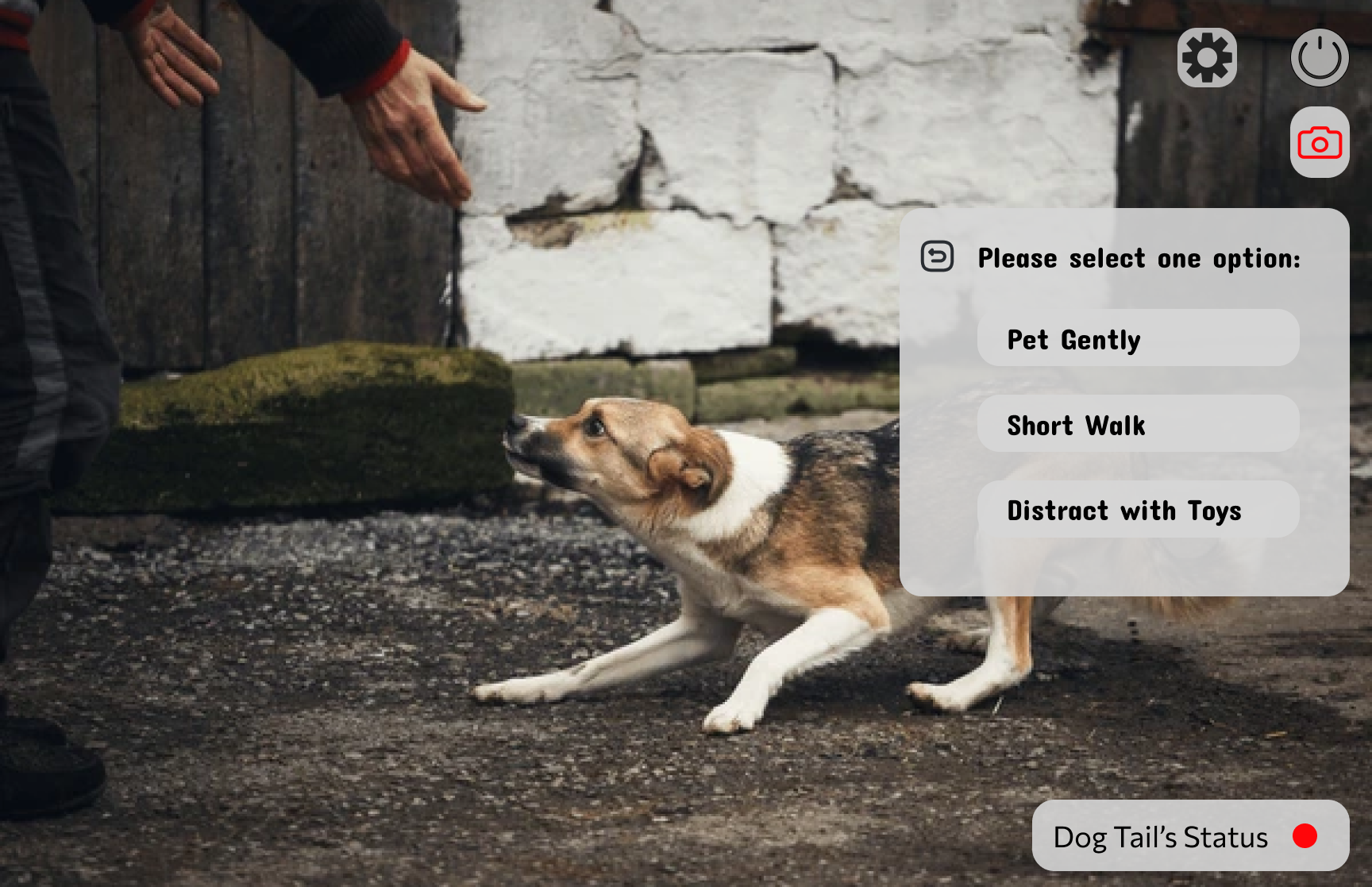
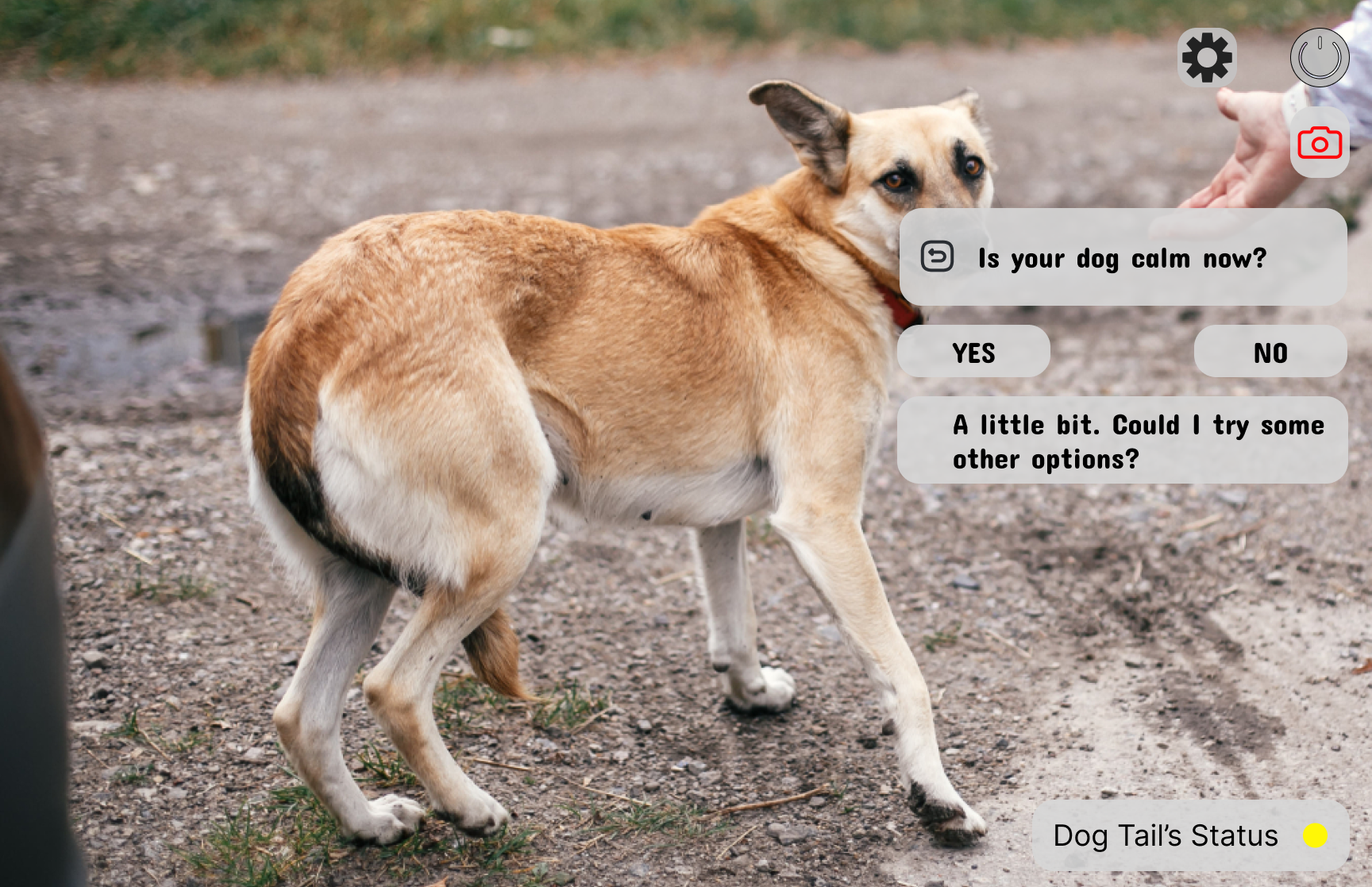
#2 Practice Skills Interpreting Dog’s Emotional Triggers and Responses to Prevent Crisis from Occurring
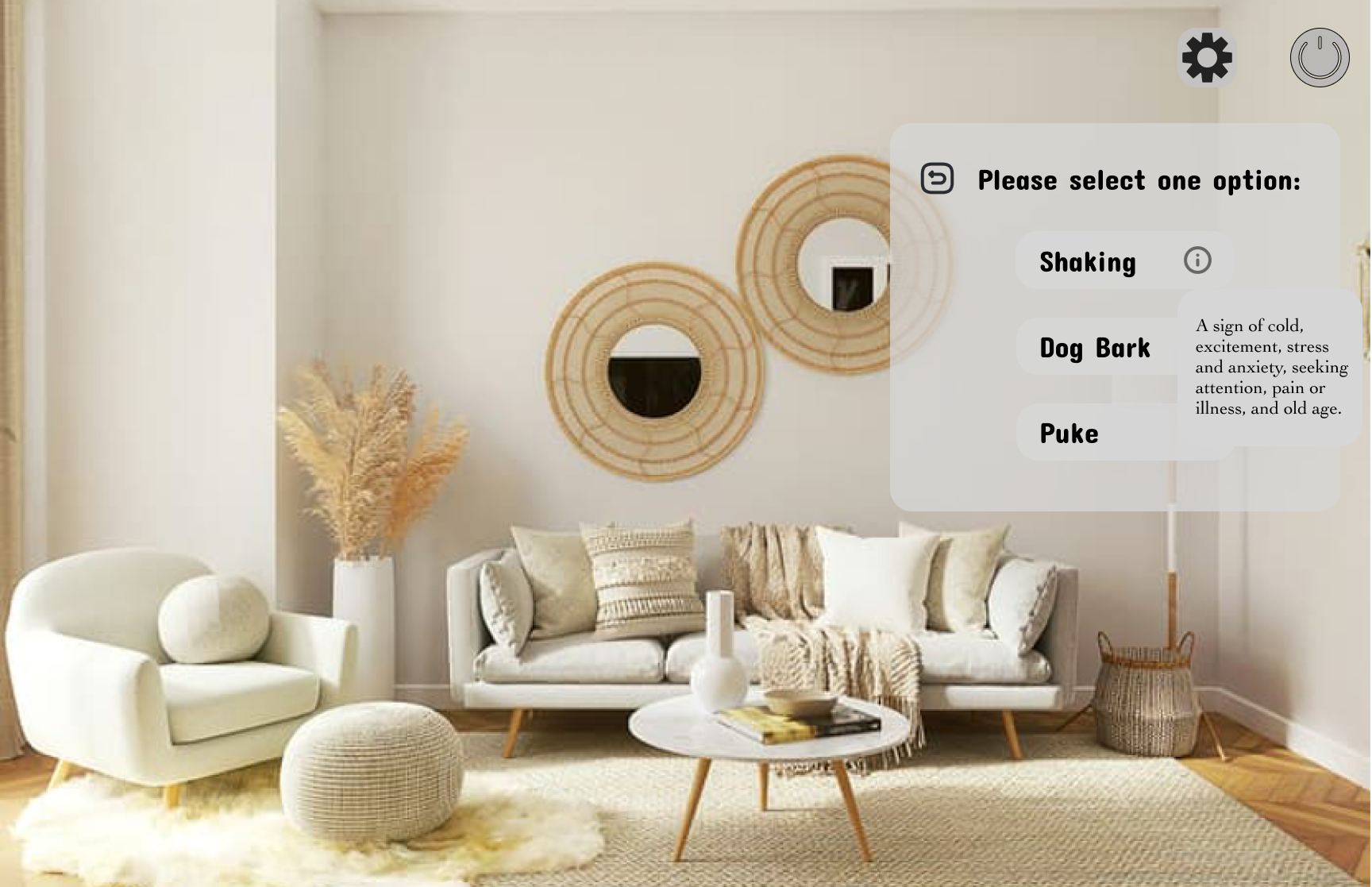
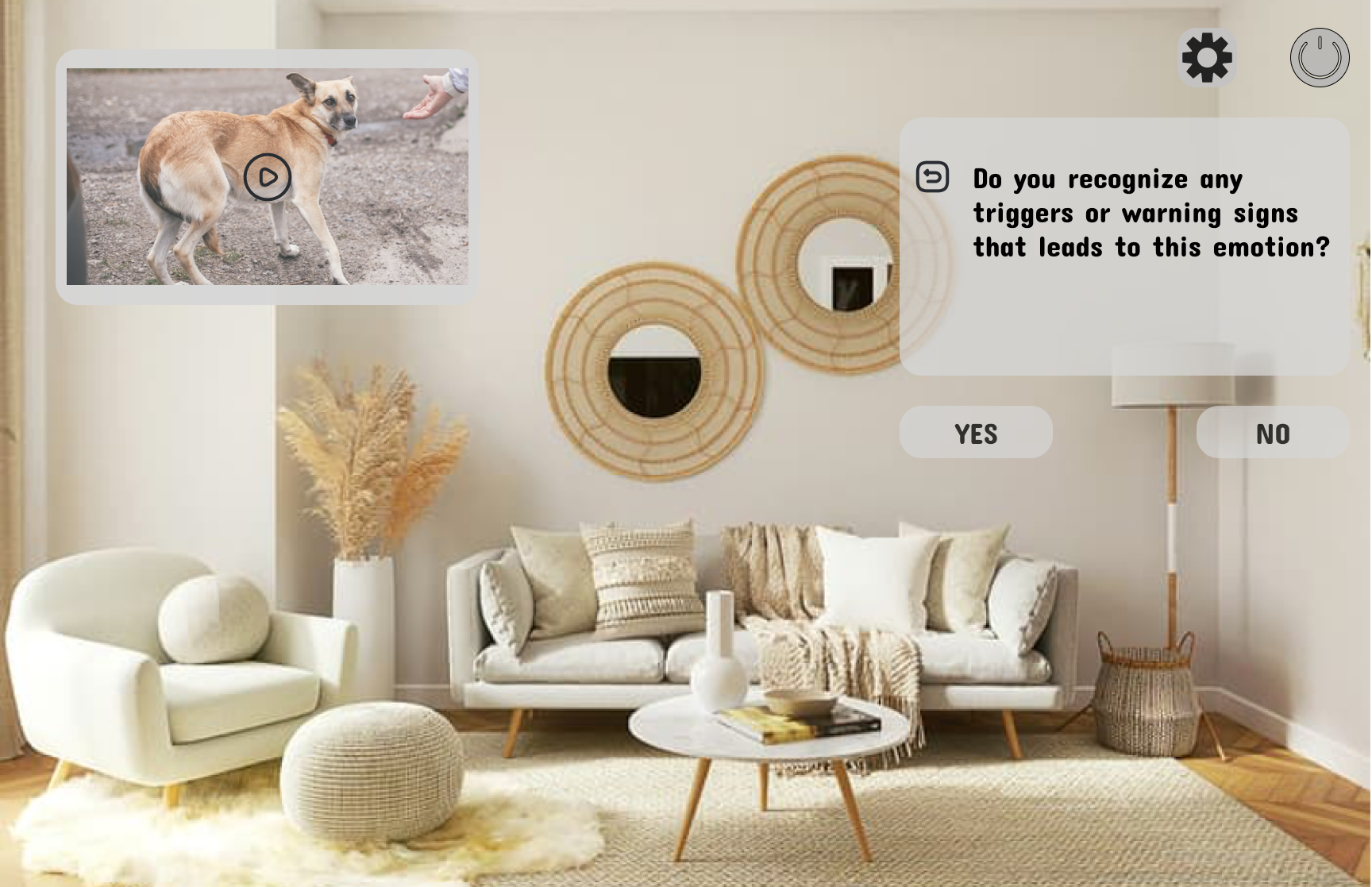
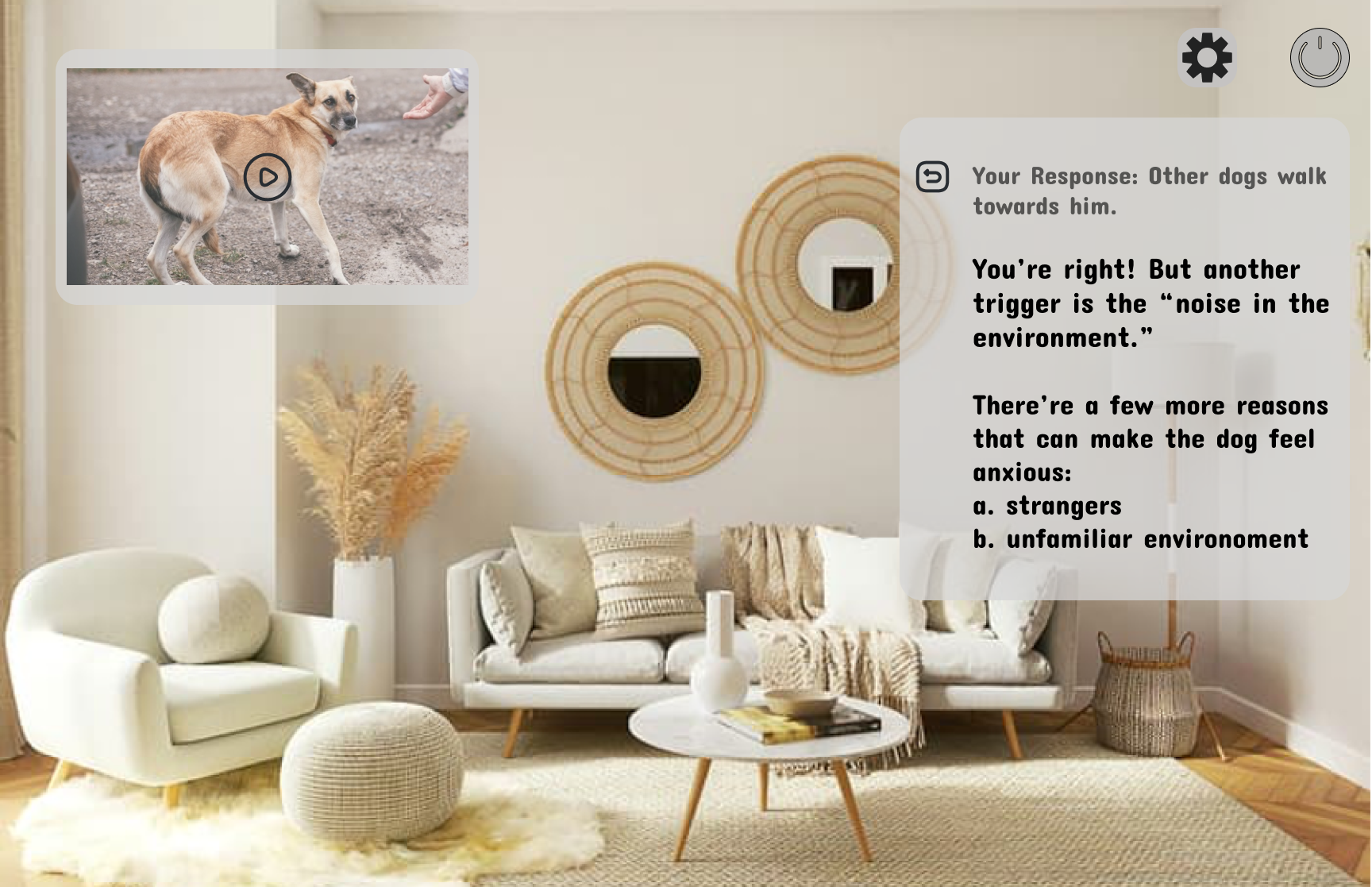

Design Research and Key Insights
The goal of our design research was to understand the challenges dog owners face in interpreting and managing their pets' emotional and reactive behaviors. We aimed to identify gaps in current solutions and explore how real-time emotional monitoring could enhance behavior management. Our method was to conduct semi-structured interviews with three participants: a dog owner, a veterinarian, and a dog trainer, each providing unique perspectives on dog behavior, training, and management. These participants were selected for their diverse experiences, ensuring a holistic view of the challenges faced. Semi-structured interviews were chosen to allow flexibility in gathering in-depth insights into dog's emotional cues, behavioral management, and training needs. This approach provided actionable insights that informed our design decisions.

Real-Time Emotional Monitoring Enables Timely Interventions
“It’s hard to know what’s going on in her mind until it’s too late, and by then, she’s already reacting.”
The quote from the dog trainer revealed that dog owners struggle to recognize early signs of stress or anxiety
in their pets, often leading to delayed responses that exacerbate reactive behaviors. This highlighted the
importance of real-time tools for detecting subtle cues. Incorporating this into our design, we prioritized
features like AR-driven real-time behavior analysis to guide owners in preventing crises before they escalate.
Owner Education Requires Long-Term, Reflective Approaches
“Dog owners need to learn how to manage their own emotions since stress can transfer to pets.”
The quote from the veterinarian highlighted the need for comprehensive education on dog behavior. This
insight shaped our focus on combining immediate support with long-term learning tools, such as VR scenarios
for reflective practice, helping owners understand their dog's triggers and manage interactions proactively.
Iterative Design and Key Insights
Our iterative design process started with low-fidelity sketches to establish basic design concepts based on our
design research. We evolved these sketches into storyboards and task walkthroughs to convey context and illustrate
interactions, focusing on two primary tasks: supporting in-the-moment crisis responses and practicing behavioral
interpretation. This led to the development of paper prototypes and heuristic evaluations, where we identified
crucial usability issues such as the absence of a back/undo button and confusing visual indicators. Usability testing
with target users further revealed problems like insufficient feedback, complex task flows, and unclear navigation,
which informed our refinement in the digital mockup stage.
Reflecting on this process, the iterative nature of our design approach—from prototyping to user testing—was
instrumental in uncovering and addressing user needs effectively, making the final design both intuitive and
effective. Each cycle provided critical insights that directly shaped subsequent revisions, culminating in a design
that helps dog owners manage and understand their pets' behavior both in real time and through reflective learning.